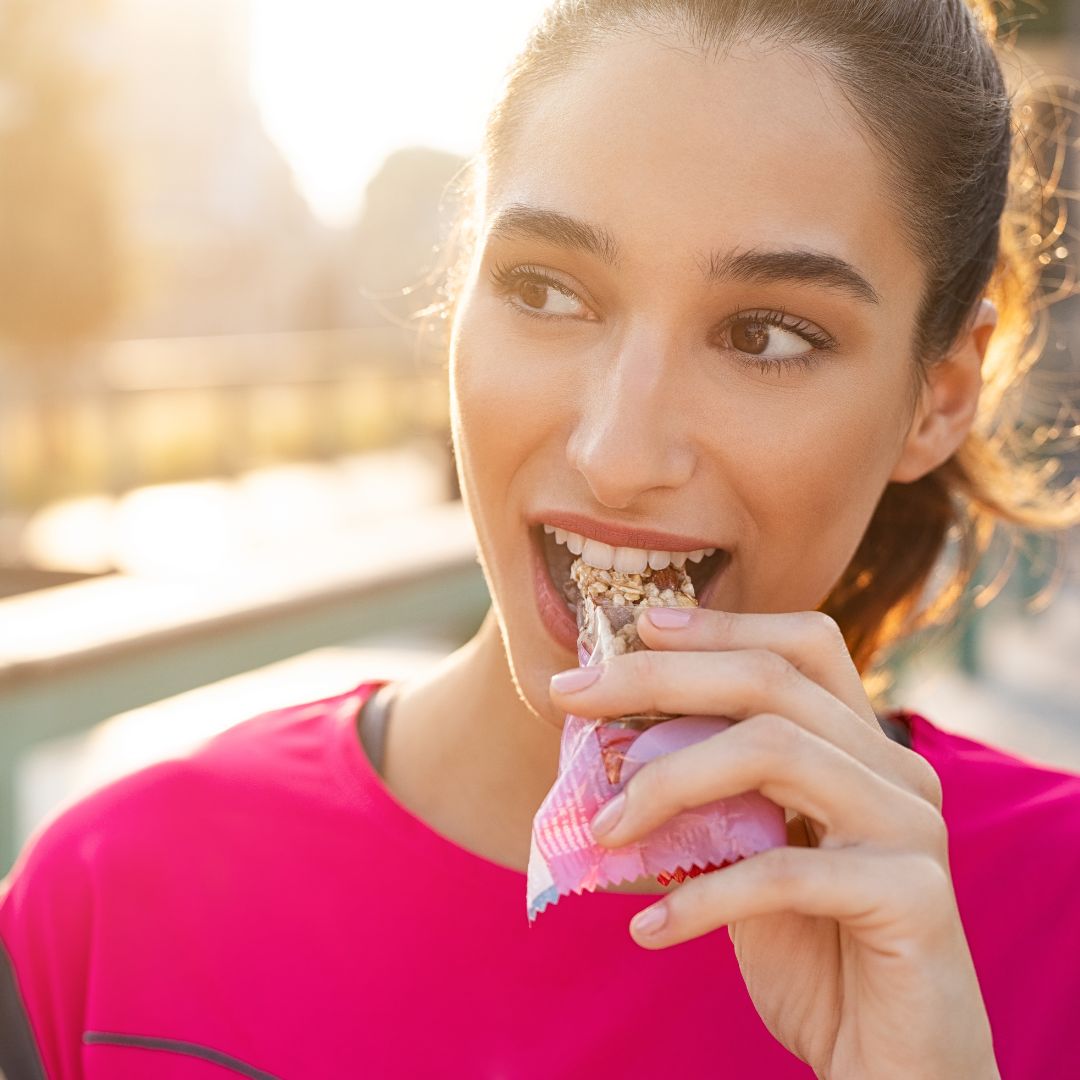Drawing clients to your wellness platform only to have them bounce due to outdated digital marketing tactics is a mistake you can’t afford to make. The health and wellness industry is rife with traps that can hinder your online presence—it’s wild out there!
This guide aims to clear the haze from your marketing vision. It highlights the digital marketing mistakes to avoid and guides you toward robust, conversion-optimised strategies. Remember, success isn’t just about getting clicks; it’s about retaining visitors once they arrive.
Let’s get into it!
Top Digital Marketing Mistakes You’re Probably Making in Your Health and Wellness Business
Lack of Personalisation
Wellness is a very personal journey, yet many brands fail to tailor their digital marketing efforts to individual preferences. Generic messaging and one-size-fits-all approaches can alienate potential customers seeking personalised solutions.
Digital marketing is a lot like tailoring: the better the fit, the better your chances of retention. Impersonal marketing messages have an unfavourable impact on your readers, causing disinterest and evoking unfavourable responses.
According to Epsilon, ‘80% of consumers are more likely to make a purchase when brands offer personalised experiences’. This statistic serves as a reminder of the power of personalisation in influencing consumer behaviour.
How to fix it
It’s essential to leverage tools to collect and analyse customer data, segmentation, and personalised messaging. Customer Relationship Management (CRM) systems like HubSpot or Salesforce can help store and analyse customer data. At the same time, email marketing platforms such as Klaviyo or Mailchimp offer features for segmenting email lists and creating personalised campaigns. By utilising these tools effectively, wellness brands can tailor their digital marketing efforts to individual preferences, increasing the likelihood of conversion.
Boots, a leading pharmacy and beauty retailer, uses digital personalisation to tailor product recommendations, offers, and content to individual customers based on their purchase history, preferences, and online behaviour. The brand’s loyalty programme, Advantage Card, collects data to give members personalised discounts and rewards.
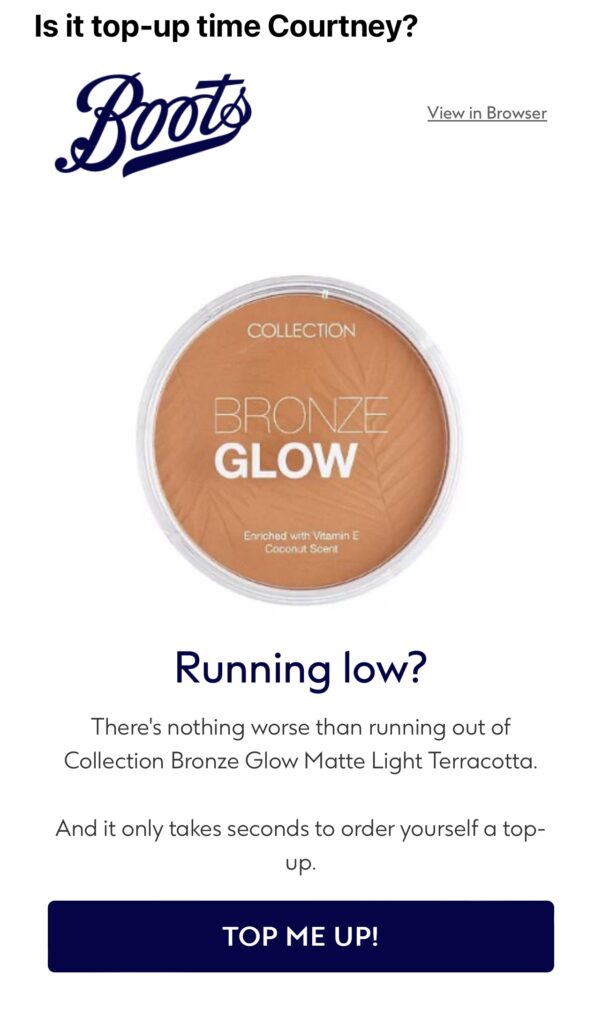
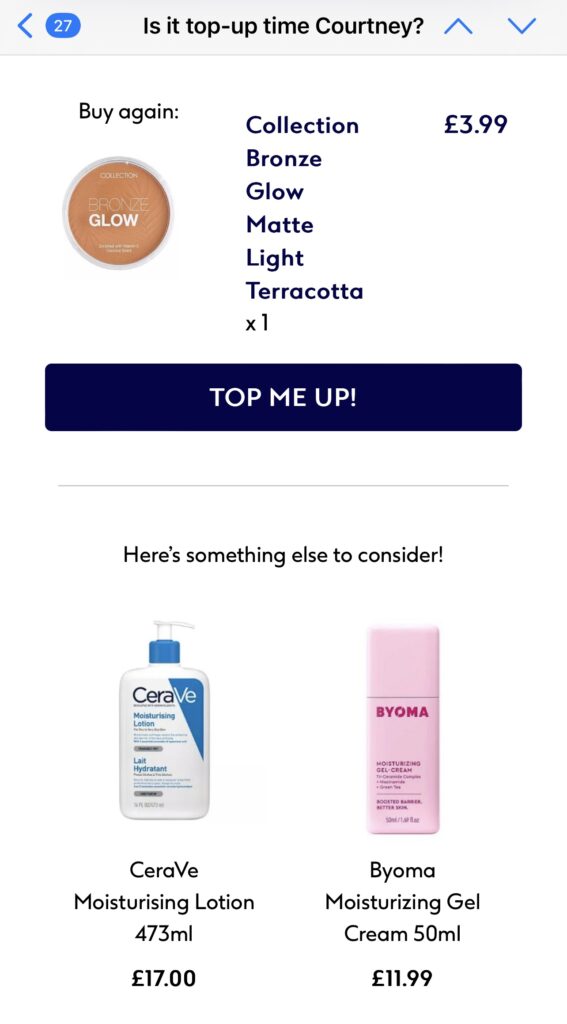
In the above email, a personal reminder was sent to check if the customer needs a top up of a previous purchase. Further in the email, product recommendations appear, encouraging the customer to shop further. These recommendations are likely to be based on products that have been purchased before or previously searched for. Using the customers’ names and recommending products they may like is a great way to make the customer feel special – a nice personal touch.
Overemphasis on Product Promotion
Promoting products and services is essential for any business, but solely focusing on sales pitches can come across as insincere. Brands should strive to strike a balance between promotional content and valuable, educational and insightful content that will genuinely help their audience.
One example of a wellness brand focusing mainly on product promotion in its digital marketing efforts is Protein World. The brand is known for its range of protein supplements, meal replacements, and fitness products.
Protein World offers a variety of products designed to support a healthy lifestyle, and its digital marketing campaigns often focus heavily on promoting these products through targeted ads, sponsored content, and influencer partnerships. Its messaging prioritises product features over educational content or holistic wellness advice, potentially leading to a perception of excessive product promotion.
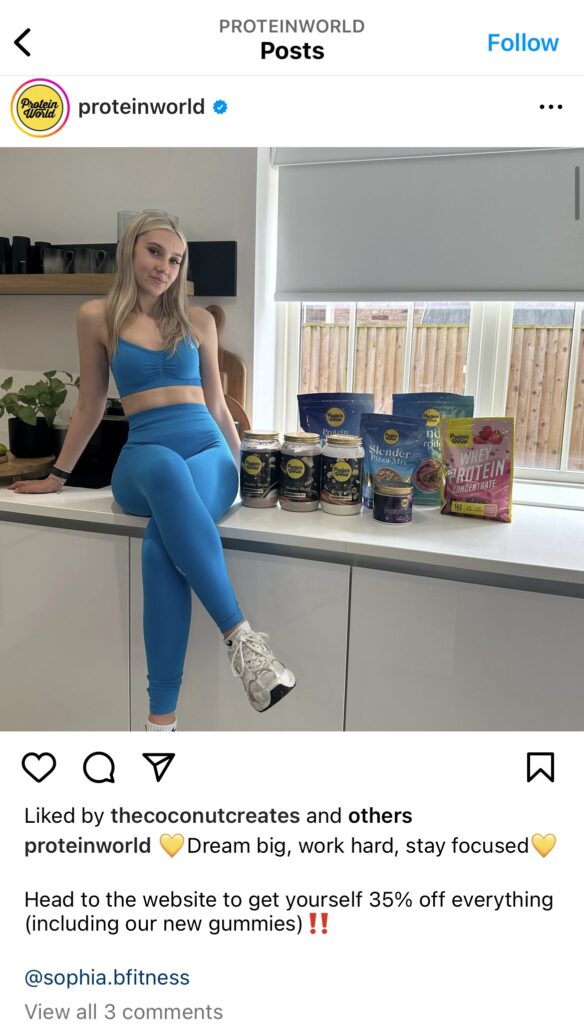
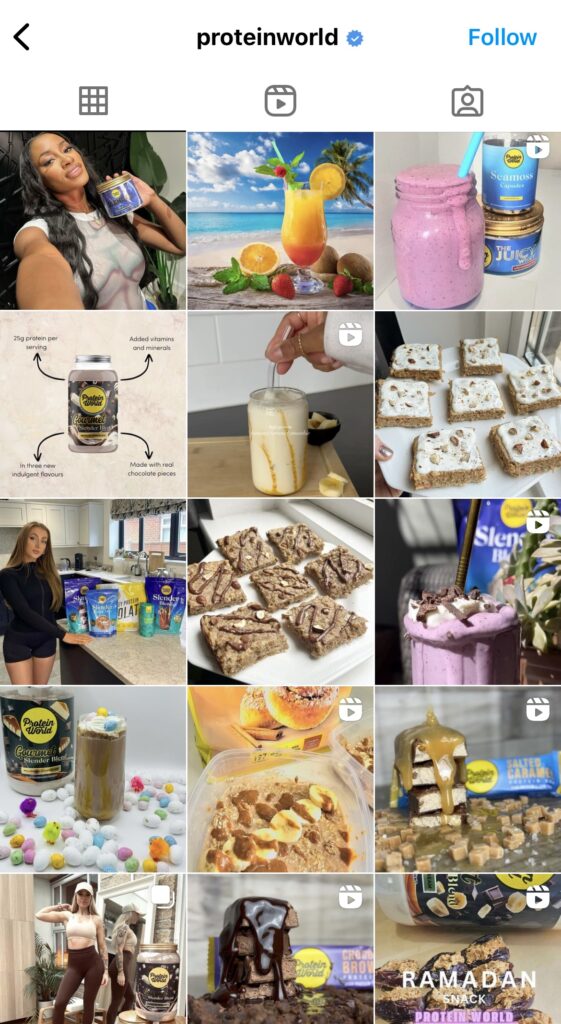
Although this approach has worked well in the past, we are now seeing a lot of educational and authentic lifestyle content being pushed on platforms like TikTok. This goes to show just how quickly things can change. The overly promotional content approach could risk alienating consumers seeking more authentic and informative content.
Balancing Promotional Content with other Content Types
How can you avoid this?
Creating different content pillars in the planning stage of your content strategy is crucial for cultivating a more well-rounded approach. By diversifying your content strategy beyond promotional messages, you can provide valuable information, inspiration, and support to your audience.
Here are a few examples for wellness brands:
- Educational Content: Provides valuable information and insights about health, fitness, nutrition, and overall wellness. This can be in blog posts, How-to guides, tutorials, Infographics or videos.
- Inspirational Content: Aims to motivate and inspire the audience on their wellness journey. Success stories, before and afters, testimonials, motivational quotes and affirmations related to health and wellness are all great examples of inspirational content.
- Lifestyle Content: Focuses on subtly showcasing the brand’s products or services in real-life scenarios and connecting with the audience on a personal level. User-generated content, behind-the-scenes content, wellness challenges, and trending videos are great ways to cover this content pillar.
- Expert Advice: Involves collaborating with health and wellness experts to provide authoritative guidance and support to the audience. This can be achieved through Interviews or Q&A sessions with nutritionists, fitness trainers or holistic health practitioners. Guest blog posts, social media takeovers, and webinars are also sufficient ways to create good quality expert advice content.
Ignoring Social Media Engagement
Social media platforms offer valuable opportunities for engagement and community-building in the wellness industry. Brands that neglect to actively engage with their audience miss out on developing meaningful connections and building brand loyalty.
Leveraging Live Sessions for Social Media Engagement
Engagement on social media goes beyond simply posting content. It involves:
- Actively listening to your audience.
- Responding to their comments and messages.
- Encouraging user-generated content.
By engaging authentically with your audience, wellness brands can create a sense of community and belonging where individuals feel heard, valued, and understood. This strengthens the bond between the brand and its followers and encourages ongoing participation and advocacy.
Joe Wicks, also known as The Body Coach, is a fitness personality who frequently goes live on Instagram and YouTube to share workout routines, healthy recipes, and wellness tips. His live sessions often include Q&A segments where he addresses viewers’ questions about fitness, nutrition, and mindset.
His live sessions provide an interactive platform for his audience to engage with his content in real time. By incorporating Q&A segments into his broadcasts, Wicks encourages viewer participation. This approach allows him to address his audience’s specific needs and concerns and creates opportunities for viewers to feel heard. The interactive nature of these sessions encourages viewers to stay engaged for extended periods, increasing overall watch time and enhancing the reach and impact of his message.
Overall, ignoring social media engagement means missing out on valuable opportunities to connect with your audience, build brand loyalty, and ultimately drive business growth in the competitive wellness industry.
Neglecting Visual Content
Visual content, such as videos, infographics, and aesthetically pleasing images, plays a crucial role in capturing the attention of audiences online. Wellness brands that rely solely on text-based content miss out on the opportunity to create visually engaging experiences.
Elevating Your Visual Content Strategy
Here’s what you need to do:
- Invest in Quality Visuals: Allocate resources to produce high-quality images, videos, and graphics that align with your brand aesthetic and messaging. Investing in professional photography, videography, and design can elevate the visual appeal of your content and enhance its effectiveness.
- Diversify Content Formats: Experiment with different types of visual content, including videos, infographics, GIFs, and interactive elements, to keep your audience engaged and entertained. Content format variation ensures you cater to different preferences and capture attention across various platforms and channels.
- Tell Stories Through Visuals: Use visual content to tell stories, evoke emotions, and convey key messages about your brand, products, services and values. Incorporate storytelling elements into your visuals to create a deeper connection with your audience and leave a lasting impression.
Gymshark, a leading fitness apparel brand, leverages striking imagery and videos to showcase its products in action. These Images and videos feature fitness influencers and athletes in dynamic workout settings.
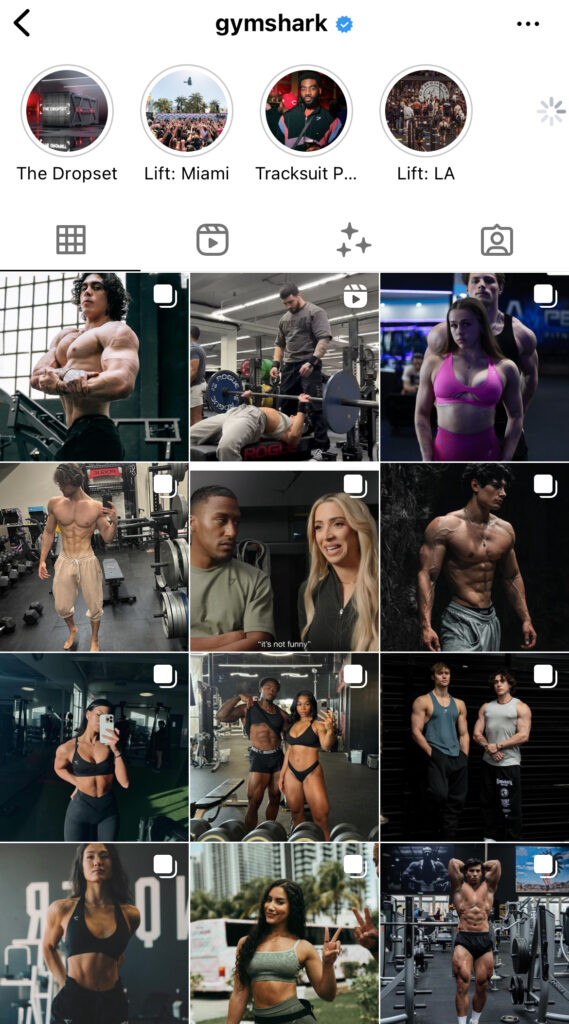
The visually appealing content Gymshark creates not only highlights its products but also inspires and motivates its audience to pursue their fitness goals.
Cost-Effective Strategies for Visual Content Creation
If you don’t have the budget, you can:
- Use Smartphone Cameras: Modern smartphones often have high-quality cameras that capture stunning images and videos. Experiment with different angles, lighting conditions, and settings to achieve professional-looking visuals.
- DIY Photography and Videography: Invest in basic photography and videography equipment, such as tripods, stabilisers, and smartphone lens attachments, to improve the quality of your visuals.
- Utilise Free or Affordable Editing Tools: Use free or low-cost editing software like Canva to enhance visual content.
- Repurpose User-Generated Content: Encourage your audience to contribute user-generated content, such as photos and videos featuring your products or brand. Repurpose this content in your marketing campaigns, with permission, to showcase authenticity.
- Focus on Authenticity and Creativity: Instead of relying on expensive equipment or elaborate setups, prioritise authenticity and creativity in your visual content. Authenticity resonates with audiences and can be achieved through genuine storytelling, candid shots, and behind-the-scenes glimpses of your brand.
- Leverage Stock Photography and Video: As a last resort, access free or affordable stock photography and video libraries to supplement your visual content.
Failure to Provide Evidence-Based Information
Consumers in the wellness industry increasingly seek evidence and proof. This type of information provides validation to support their health decisions. With evidence and proof, wellness brands can maintain their credibility and maintain the trust of their audience. Providing accurate, evidence-based information should be a priority in digital marketing efforts.
Strategies for Evidence-Based Wellness Marketing
What you need to do:
- Research and Fact-Checking: Ensure that reputable sources support all information provided in digital marketing materials. Conduct thorough research and fact-checking to verify the accuracy and credibility of the information before sharing it with your audience.
- Collaborate with Experts: Work with qualified professionals, such as nutritionists, dietitians, or medical professionals, to review and validate the information presented in your content. Collaborating with experts adds credibility and authority to your brand’s messaging.
- Transparent Communication: Be transparent about the sources of information and the level of evidence supporting your claims.
Prioritising Evidence-Based Wellness Marketing
Holland & Barrett’s Health Hub and The Wellness Edit Podcast is a prime example of how wellness brands can leverage digital marketing strategies to provide evidence-based information and support consumer well-being.
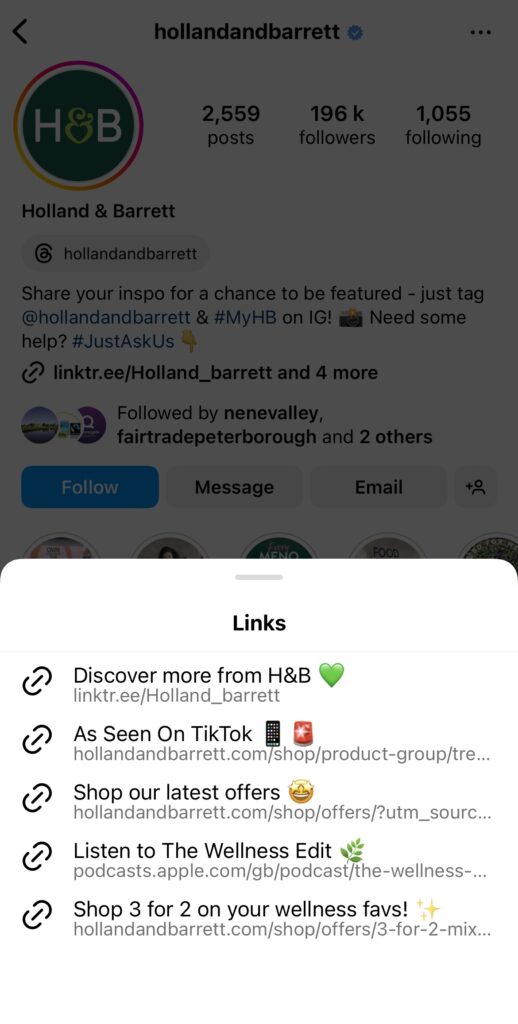
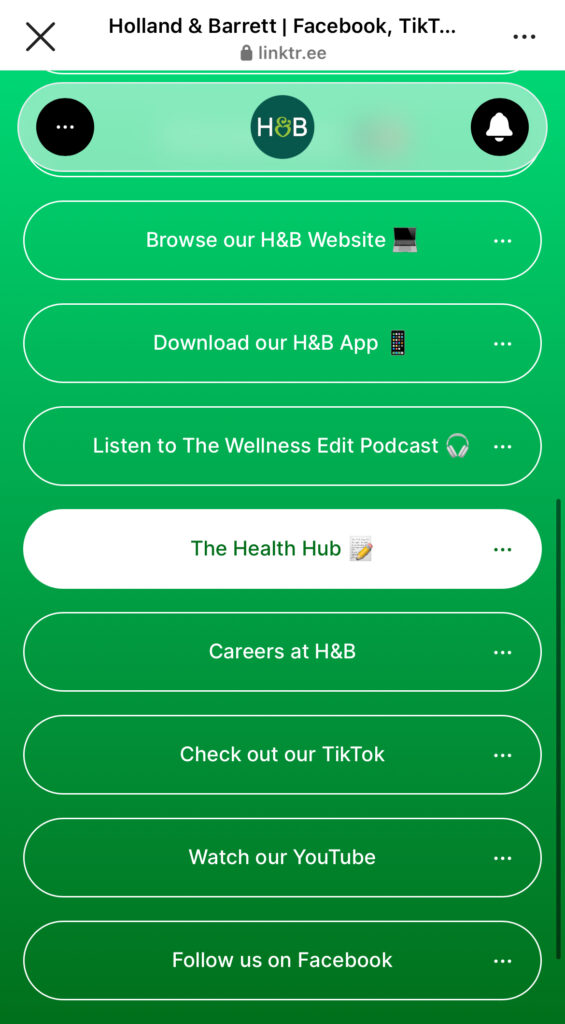
The Health Hub offers articles, guides, and interactive tools on various wellness topics, while the podcast features expert interviews and discussions. By promoting this valuable content on social media platforms or by email campaigns and analysing user data, Holland & Barrett reaches a broader audience, builds credibility, and tailors its offerings to meet consumer needs. This approach strengthens the brand’s online presence, gains trust, and drives business growth. The brand becomes an authority in the wellness industry, which is important because trust and credibility are everything in health and wellness.
Inconsistent Email Marketing Strategies
Email marketing holds a significant place in the wellness industry. It’s the perfect tool to build relationships with potential customers and nurture existing ones. But one mistake can ruin it all.
Wellness brands often make the mistake of sending emails inconsistently or without a clear strategy. Irregular communication can lead to subscriber disengagement, while a lack of strategic planning can result in poorly timed or irrelevant content that fails to resonate with recipients. Irregular communication can include a relentless bombardment of emails or needing to send email campaigns more regularly.
Overlooking Email List Segmentation
Wellness brands often maintain email lists with diverse subscriber interests and preferences. Neglecting to segment these lists based on demographics, past purchase behaviour, or engagement levels can result in sending generic emails that are less relevant to individual subscribers. By implementing email list segmentation, brands can deliver targeted content that resonates with specific audience segments, leading to higher engagement and conversion rates.
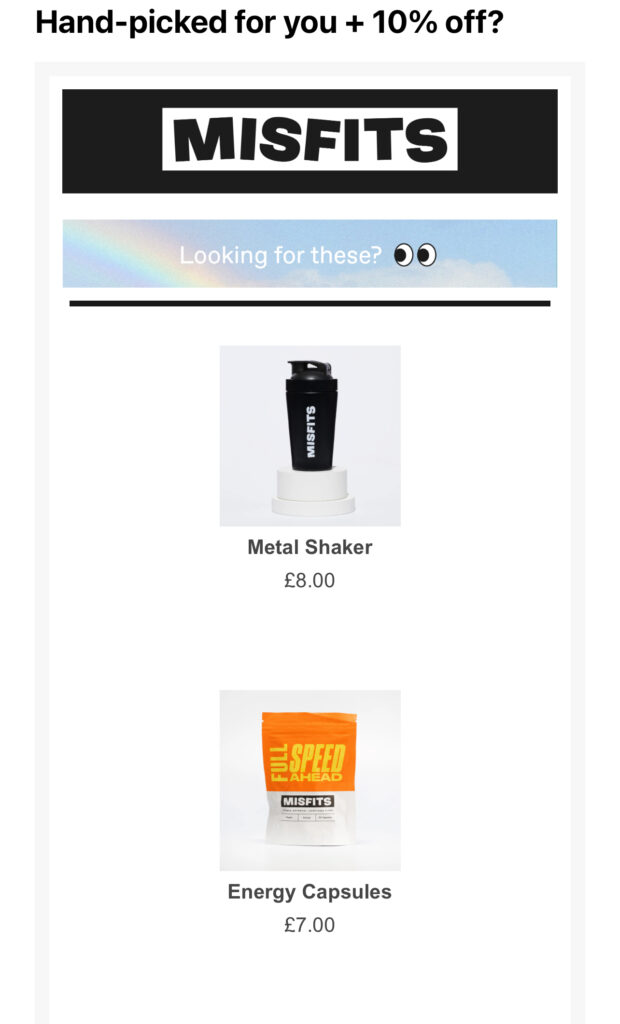
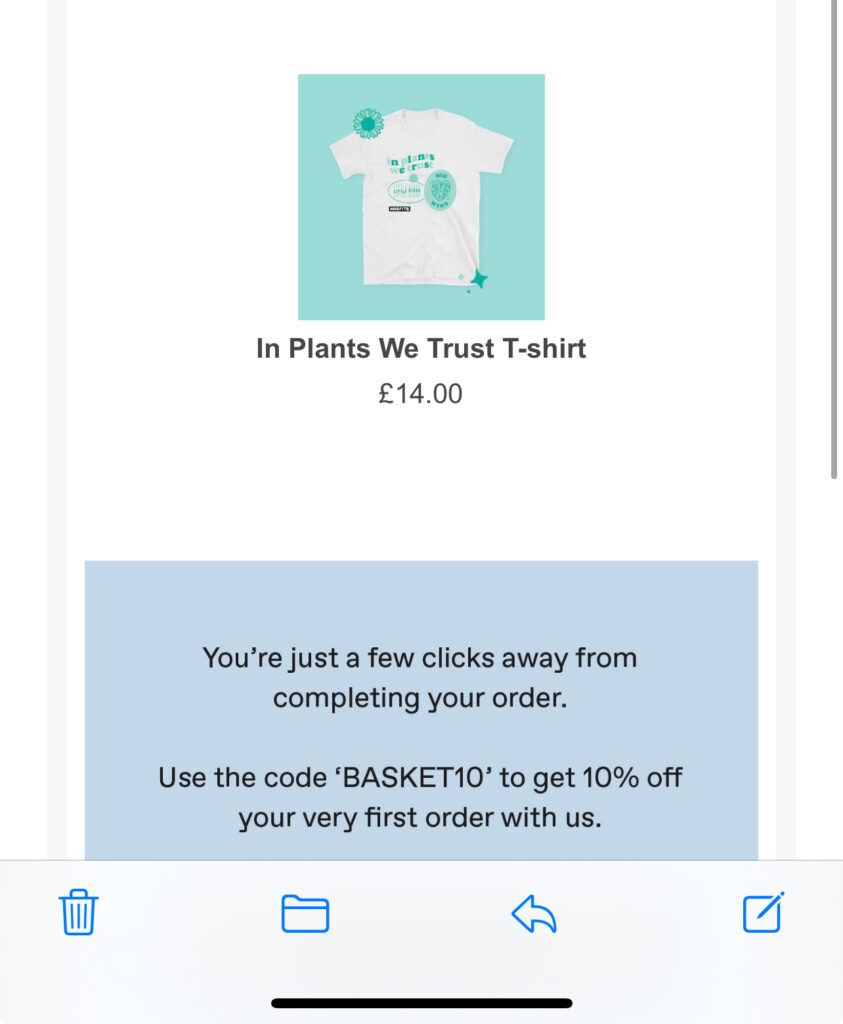
For instance, the above example of an email sent by Misfits, a plant-based snack brand, shows that the email content was based on the customer’s past search behaviour. The email is personal and specifically targets particular audience segments.
Supplementary Information
The Role of Analytics in Digital Marketing
Digital marketing without analytics is like driving in the dark with headlights off. Understanding your audience, their preferences, and their behaviour is essential to formulating better marketing strategies. Not tracking the right metrics and not using analytics to inform your strategy often leads to investing time and resources into ineffective tactics.
To use analytics effectively, first, define your KPIs, make adjustments based on real-time data, and do regular audits to ensure you are tracking metrics that matter.
The Importance of a Multi-Channel Digital Marketing Strategy
Focusing only on one channel or not integrating different channels can limit your reach and marketing effectiveness. A multi-channel marketing strategy is about consistently presenting your brand across various channels and leveraging each one’s unique benefits. The first step is to identify where your audience spends time online. Then, integrate your marketing efforts across these channels to ensure a seamless user experience.
The Role of Continuous Learning and Adaptation in Digital Marketing
The digital marketing landscape isn’t static. It constantly evolves and is influenced by technology, user behaviour, and market trends. The mistake many make is not keeping pace with these changes or not adapting strategies based on performance. Digital marketing rewards the ones who continually learn and adapt. Be up-to-date with the emerging trends, regularly review your marketing performance, and don’t hesitate to change something that is not yielding results. Every error corrected and improved brings you closer to a foolproof digital marketing strategy in the health and wellness sector.
Conclusion
In a nutshell, tiny details can make or break your digital marketing strategy. By identifying these common mistakes, a business can dramatically improve its approach. So, are you ready to take the first step towards a healthier online presence for your brand? Start by auditing your existing digital marketing efforts. Cast a critical eye over your current strategies—are they falling into these common pitfalls? If so, don’t be disheartened. Instead, consider this an opportunity to learn and improve.
Now, go forth and market smarter, not harder.
For more marketing advice for your wellness brand, read our blog. For some extra support, contact us to see how the Hummingbird Team can help you with your marketing efforts.

